
What you should know about arthritis
If the word makes you think about older folks with creaky knees and jumbo bottles of ibuprofen, you need an update. Arthritis now strikes an estimated 20 per cent of Canadians, according to the Arthritis Society. By far the most common type is osteoarthritis, followed by gout, psoriatic arthritis, and rheumatoid arthritis, according to the Arthritis Foundation. There is no cure for any of them, but science has made several breakthroughs in understanding how to treat the inflammation and pain that come with the condition as well as how to halt the underlying joint damage. The first line of defense: Educate yourself.
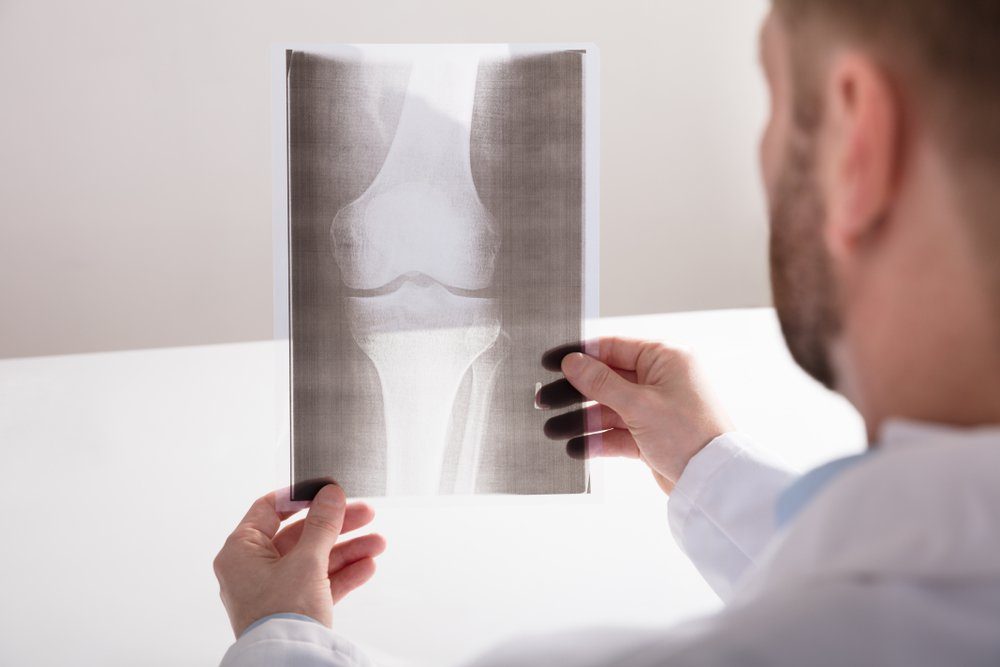
X-rays are still the best diagnostic tool for arthritis
“You can’t see the cartilage wearing away with an X-ray, but you can see the bones touch, which is usually enough to make a diagnosis,” says Alexis Colvin, MD, an orthopedic surgeon at The Mount Sinai Hospital in New York City. Indeed, a Washington University study noted that X-rays can diagnose osteoarthritis as accurately as magnetic resonance imaging (MRI)—and they do it faster and more cheaply.
But remember: “Just because you don’t have it on the X-ray doesn’t mean you don’t have it,” notes Dr. Colvin. Your doctor can do blood tests and a physical exam to determine whether you have arthritis. Identifying it early is key because it gives you time to turn to lifestyle changes before irreversible damage is done to your knees (the most common pain point) or other joints.
Check out this primer on the types of arthritis you could have—and how to tell the difference.

There’s no cure for OA
The customary treatment for OA is nonsteroidal anti-inflammatory drugs (NSAIDs) such as ibuprofen. The medications don’t repair joints, but it can make them less stiff and achy. Though NSAIDs can be effective at getting you through the day, says Kelli Allen, PhD, a researcher at the Thurston Arthritis Research Center, they don’t protect joints from progressive damage and may have serious side effects. Using a cane or crutch can make getting around easier without any side effect, says Dr. Colvin.
Here’s everything you need to know about supplements for joint pain.

NSAID gels, drops, or patches are good options
“When you use a topical it gets absorbed through the skin so it has to penetrate far to get to the cartilage,” says Dr. Colvin. “Topicals may not help as much as oral NSAIDs, but they’re good for people who don’t want to take a pill, and they have fewer side effects like gastrointestinal bleeding.” And research shows they can help: In one study, when people with osteoarthritis used NSAID gels, drops, or patches, half said their pain fell by 50 per cent or more over 12 weeks.
Looking for other ways to lessen joint aches? Avoid eating these foods that can trigger arthritis flares.

Opioids cause more pain
“I would 100 per cent never advise taking opioids for arthritis pain,” says Dr. Colvin. Why that’s good advice: A study published in JAMA involving 240 osteoarthritis patients showed that those who took opioids were in slightly more pain after a year than those who took non-opioid medication. The researchers aren’t sure why, but given that these drugs can be very addictive, they recommend against opioids.
Osteoarthritis is one of the conditions that may be treated with medical marijuana.
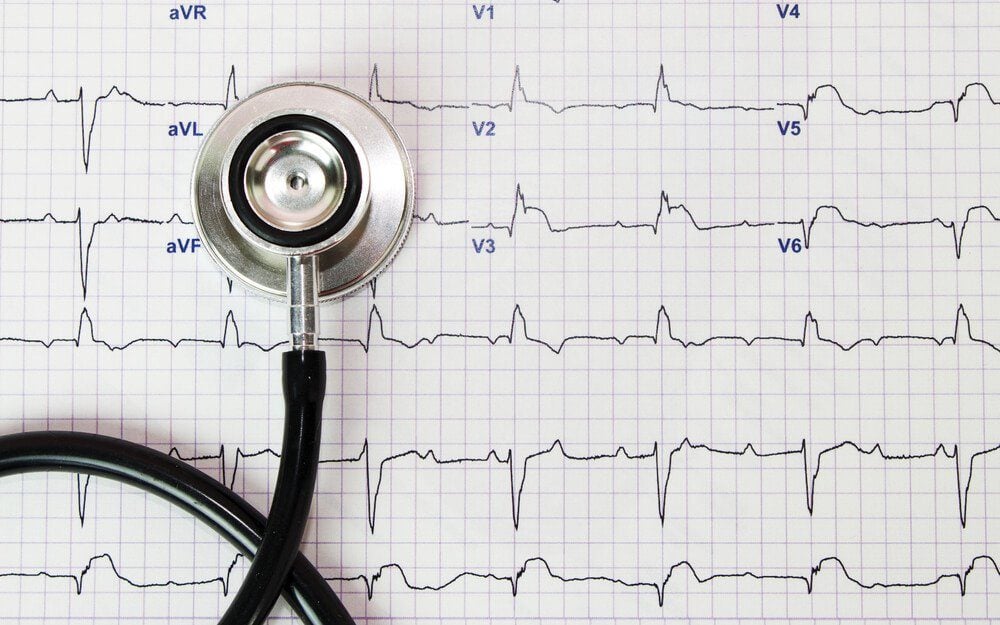
Arthritis boosts your odds for heart disease
Arthritis hurts your heart by contributing to chronic inflammation, reducing physical activity, and increasing NSAID use—all factors in cardiovascular risk, says Dr. Colvin. Researchers estimate that OA boosts your odds for heart disease by 24 per cent. (Psoriatic and rheumatoid arthritis raise the odds even higher.)
Check out these ways to boost your heart health!

Taking the right herbs and dietary supplements can help
Susan Blum, MD, founder, and director of Blum Center for Health and author of two books on arthritis, suggests several herbal supplements for arthritis. Top among them: Boswellia, which can help with pain, and curcumin, which can ease inflammation. “Taking them together makes them more effective, so look for a supplement that contains both compounds as well as a fatty acid such as phosphatidylcholine, which helps with absorption,” says Dr. Blum. If pain keeps you from getting quality sleep, she suggests taking the supplement right before bed.
Recovering from a recent operation? These are the best vitamins and supplements to take after surgery.

Cortisone injections don’t help in the long-term
“A single shot can ease pain,” says Timothy McAlindon, MD, MPH, chief of rheumatology at Tufts Medical Center. But the relief is typically only temporary, and injections aren’t a long-term solution. A recent study found that repeated shots of cortisone, a steroid, not only didn’t control pain but actually led to more joint damage.
Dr. Colvin recommends having no more than three cortisone injections over a lifetime. “They can be very helpful if someone has arthritis and nothing else is helping, or for someone who isn’t ready for surgery, or whose arthritis isn’t bad enough to need surgery yet,” says Dr. Colvin. But remember, “anything you do that’s not surgery isn’t changing the underlying process of the cartilage wearing away,” she says.
Check out these five exercises that can help reduce arthritis pain.

The jury is still out on other injectable treatments
Hyaluronic acid injections are designed to add more shock-absorbing fluid to joints, but research on their effectiveness is mixed. Similarly, new injectables using your own fat, bone marrow, platelet-rich plasma, or stem cells promise relief, but Dr. McAlindon says “the research isn’t sufficient to show if they actually work” to ease pain and rebuild joints.
Learn more about psoriatic arthritis.

Insomnia is an undertreated side effect of arthritis
“When you don’t sleep well, your cortisol levels go up,” says Dr. Blum. In other words, you’re feeding stress which can increase the inflammation linked to arthritis. A lack of sleep can also intensify sensitivity to pain, a problem for arthritis patients, she notes. One solution: Cognitive behavioral therapy, which helps people change the distorted thinking that can worsen pain levels. The practice has been shown by research to increase the amount of time osteoarthritis sufferers slept—and presumably decreased their pain.
Here are more things you can do during the day for a better night’s sleep.

New devices might help
A device called Coolief uses specialized electrodes to send water-cooled radio waves into the tissue around your knee, which temporarily deactivate nerves. Patients reported greater, longer-lasting pain relief (up to 12 months) with Coolief than with cortisone injections.
Try these 11 pain management strategies for everyday aches and pains.

Stem cells could save joints—someday
Scientists have programmed stem cells to grow new cartilage on a 3-D template shaped like the ball of a hip joint. Using gene therapy, they have also activated the new cartilage to release anti-inflammatory molecules to fend off a return of arthritis. But the stem cell therapy offered for knee osteoarthritis in many clinics isn’t yet a proven cure.
Discover the stories behind Canada’s best health discoveries.

You probably need more vitamin D
People with low levels of vitamin D are at a higher risk for autoimmune diseases, though Dr. Blum notes that low D isn’t the sole trigger for arthritis. Still, it could be one piece of the puzzle and could help explains why researchers have found that people with low blood levels of vitamin D, which boosts immune function, are at higher risk for RA. One great free source of vitamin D: sunshine.
Here are the sure signs you’re not getting enough vitamin D.

Early treatment of RA can put it in remission
While there’s no way to reverse joint degeneration, getting treated as soon as possible after the onset of pain and stiffness can curb symptoms and prevent further damage. “The earlier you treat, the better,” says Paula Marchetta, MD, clinical professor of medicine at the New York University School of Medicine and president of the American College of Rheumatology. Unfortunately, a 2016 national survey found that it took people with RA four years and visits to at least three different doctors to get a proper diagnosis.
These are the diseases doctors are most likely to miss.

A shot can stop RA
Early results from one study showed that for people with mild joint aches and high inflammation levels, one shot of rituximab cut the risk of developing rheumatoid arthritis in half. The drug, which belongs to a class of medications called monoclonal antibodies, blocks the production of compounds that trigger inflammation. “Rituximab can help put RA into remission and prevent joint damage, and most patients respond well to it,” says Dr. Marchetta.
Learn about the anti-aging breakthroughs that’ll help you live healthier and longer.

Other options for RA
Monoclonal antibodies aren’t the only drugs for RA, notes Dr. Marchetta. Disease-modifying antirheumatic drugs (DMARDs) decrease inflammation and slow the progression of RA.
Here’s everything you need to know about aging in place.

One size won’t fit all
“A drug may stop working after several years. Some people have to try several before they find the one that works best,” says David Daikh, MD, PhD, director of the rheumatology fellowship program at UCSF. “We don’t know why some medications stop working,” says Dr. Marchetta. “There’s just an individual variation of response.”
Brush up on the medication mistakes that can make you sick.

Another option: Drugs engineered from human genes
A class of medications called biologics—drugs such as etanercept (Enbrel), golimumab (Simponi), and adalimumab (Humira)—are engineered from human genes and are usually an option if you haven’t responded to DMARDs. They work by targeting specific parts of the inflammation process rather than suppressing the immune system in general (as older DMARDs do), so they tend to have fewer side effects. One inflammatory target they zero in on is TNF or tumour necrosis factor, a chemical your body makes that drives the inflammation process in RA, says Dr. Marchetta. Unfortunately, biologic drugs are also more expensive than traditional medications.
These are the drugs and supplements you should never mix.
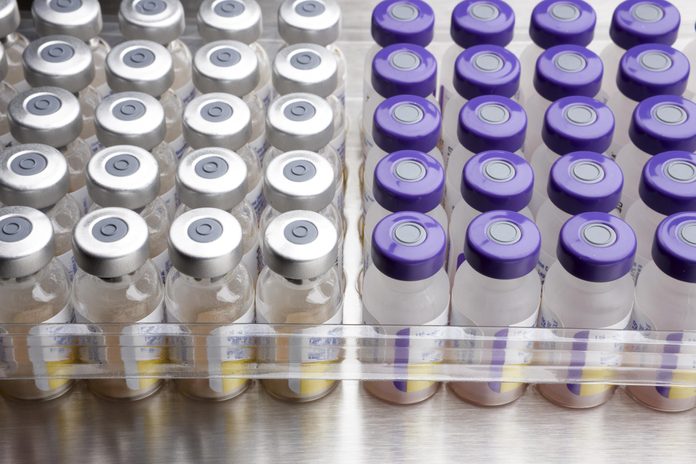
Try multiple inhibitors
Tumour necrosis factor (TNF) is an inflammatory protein responsible for pain and cartilage degeneration in RA, and drugs called TNF inhibitors can sometimes block it. And if one TNF inhibitor—such as etanercept (Enbrel) or adalimumab (Humira)—doesn’t work, try another. In a recent study, 43 per cent of patients who didn’t respond to one type of TNF inhibitor responded positively to a different one.
Here are more findings from new health studies that will change your life.

Or combine them
“Almost every patient does better with a combination of a TNF biologic and a drug called methotrexate, says Dr. Marchetta. Methotrexate is one of the most effective drugs to treat RA and is the first drug most doctors prescribe after you’re diagnosed.
You should be asking your pharmacists these questions to avoid medication errors.

Getting a timely diagnosis can prevent permanent joint damage
“In psoriatic arthritis, erosive joint changes can begin within six months of first symptoms,” says rheumatologist Sergio Schwartzman, MD. “But for many people, there can be a five-year delay in receiving a diagnosis.” A growing number of combined dermatology/rheumatology clinics may help reverse the trend.
These mistakes can lead to a misdiagnosis in the ER.
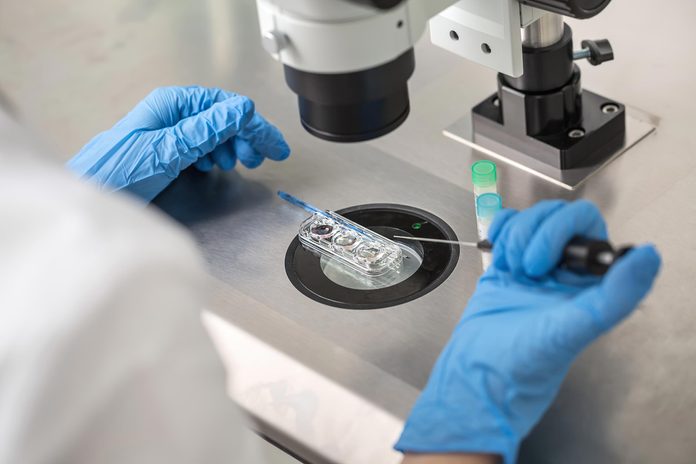
Genetic profiling could mean better treatment
“There’s a lot of exciting work being done in personalized medicine,” says Dr. Marchetta. The goal: “To see if a person responds better to drug A than drug B.” In a new multisite study published in the journal Arthritis & Rheumatology, researchers analyzed joint tissue from 41 rheumatoid arthritis patients to determine which gene variations each individual had and how they responded to each type of drug. Next, they hope to predict which patients will respond best to specific drugs based on their genetic signature, saving time and money.
Discover what your burps can reveal about your health.

Early-arthritis clinics are showing great promise
Focused on treating rheumatoid arthritis patients with a recent diagnosis, clinics have opened at the University of Rochester Medical Center, Oregon Health and Science University, and many private facilities. In one study, 89 per cent of RA sufferers treated at an early arthritis clinic got disease-modifying antirheumatic drugs (DMARDs) in three months, compared with 50 per cent who got care elsewhere. The clinic’s patients had higher remission rates as a result.
Find out what your farts can reveal about your health.

Menopause worsens the symptoms of rheumatoid arthritis
A recent study of 8,189 women in the journal Rheumatology confirms something women with RA have long experienced: Joint degeneration speeds up after menopause. Early menopause can trigger the disease too.
Learn to recognize the body signs that come before menopause.

Rheumatoid arthritis can raise your risk for cancer
Lung cancer, lymphoma, and multiple myeloma are more common in people with RA, partly due to inflammation and partly because RA drugs suppress the immune system. The link could also be less cause-and-effect, notes Dr. Marchetta. Smoking is known to increase the risk for both RA and certain forms of lymphoma, she notes.
Serious about quitting for good? Here are the best ways to stop smoking.

Nerve stimulation could reduce joint damage
In one small study, when patients with rheumatoid arthritis were zapped with mild electrical current to the vagus nerve (which passes through your neck to your abdomen), the charge reduced their levels of TNF, the same inflammatory protein targeted by TNF inhibitors. Some also had less swelling and tenderness. “This research is still in clinical trials, but it’s very exciting,” says Dr. Marchetta.
Read about the health benefits of light therapy.
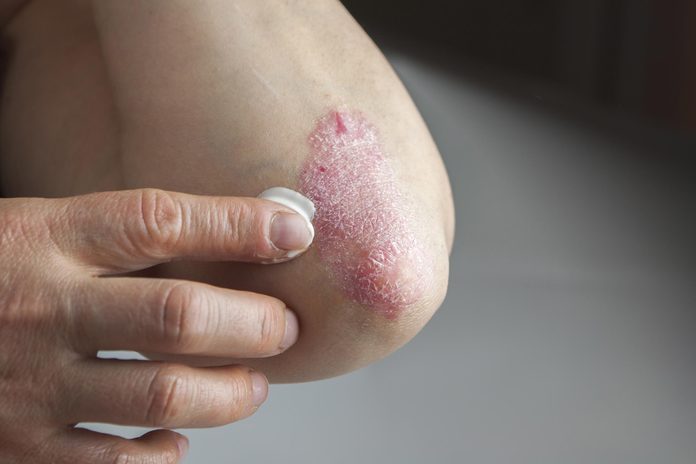
Psoriatic arthritis (PsA) is not RA
Psoriatic arthritis is a form of inflammatory arthritis often misdiagnosed as rheumatoid arthritis, but the cause and many treatments are different. “The key distinction is that only patients who have psoriasis develop psoriatic arthritis,” says Dr. Marchetta. Also, RA symptoms tend to be symmetrical—you have the same joint pain on both sides—while psoriatic arthritis symptoms can be asymmetric. Until 2013, the medications approved by the FDA to treat psoriatic arthritis were RA drugs. Since then, several new treatments for those with PsA have become available.
Don’t miss the signs of disease on your tongue.

PsA sufferers are more likely to have irritable bowel syndrome
Psoriatic arthritis sufferers are six times more likely to have the inflammatory bowel disease (IBD) known as Crohn’s disease, according to a study of more than 174,000 women. Chronic inflammation underlies both Crohn’s and PsA, and some of the medications used to treat arthritis may lead to or exacerbate IBD symptoms. (Other PsA drugs, though, can help IBD symptoms.) People with PsA are also at higher risk for diabetes, osteoporosis, kidney disease, other autoimmune diseases, and many other conditions.
Here’s what you need to know about inflammatory bowel disease.

Watch out for gout
The number of people diagnosed with gout doubled between 1960 and 1990, and rates have risen about 25 per cent since. The use of certain medications for high blood pressure—especially loop and thiazide diuretics—are among the top reasons for the increase. “Gout also has a genetic component,” notes Dr. Marchetta. And interestingly the problem isn’t that people produce too much uric acid (the compound that crystallizes in the joints and causes pain). It’s that their kidneys under excrete it, says Dr. Marchetta.
Dietary habits can raise the amount of uric acid in the blood to a level where they kidneys just can’t get rid of it. Foods and drinks rich in compounds called purines (such as bacon and sweets) also contribute to the formation of uric acid crystals, as does being overweight and sedentary. Alcohol, especially beer, is also purine-rich. “Beer can double the risk of a gout attack,” says Dr. Marchetta.
Here are 15 signs your upper abdominal pain may be an emergency.

Gout drugs can be effective, but they can also have drawbacks
In a recent study of more than 6,000 people with gout, those who took febuxostat were 34 per cent more likely to die from heart disease than people who took allopurinol, another common gout drug. But allopurinol can cause liver problems, while another older gout drug, colchicine, can cause severe diarrhea. “Every drug has side effects, so it’s important to discuss with your doctor which one might be best for you,” advises Dr. Marchetta.
Here’s how to tell if you’re a hypochondriac.

Tomatoes can be a trigger food
Tomatoes, which can increase uric acid levels, could be a gout trigger for some people, a study from 2015 found. They were the fourth most common food trigger after seafood, alcohol, and red meat. Another theory why they can be irritating: “Tomatoes are high in lectins, compounds that can irritate the gut and raise inflammation,” says Dr. Blum.
You might also want to avoid these surprisingly unhealthy foods.

Gluten, dairy, soy and corn can also trigger inflammation
Dr. Blum notes that these foods can irritate and even damage the gut for some people, triggering body-wide inflammation. “In people with arthritis, the gut is damaged, so eating foods we know are hard on the gut can make things worse,” she says. Her suggestion: Cut these foods out completely for three to four weeks, then gradually reintroduce them to see whether your symptoms worsen when you have them.
Our experts answer once and for all: is milk actually good for you?

Cherries can lower your risk for gout
“Phytonutrients in tart cherries lower levels of uric acid, so it can protect against gout and minimize gout attacks,” says Dr. Blum. And in a 2012 study, researchers followed people with gout for a year and found that those who either ate fresh cherries or took cherry extract throughout the year were 37 per cent less likely to have recurrent attacks.
Plus, cherries are also one of the most effective foods to fight inflammation!

Weight loss
Losing body fat—and belly fat in particular—is one of the best ways you can reduce arthritis symptoms, says Dr. Blum. “Belly fat is particularly dangerous because it releases inflammatory chemicals into the body that can contribute to osteoarthritis,” she says. And of course, there’s the fact that when you lose weight, it lessens the load on joints. The impact of that is important: In a study of 640 overweight and obese people, those who lost just five per cent of their body weight over two years had lower rates of cartilage degeneration compared with stable-weight participants.
Learn about the reasons unexplained weight loss could be a serious problem.

Get your fibre
You may think of arthritis as being all in your joints, but like many other conditions, there’s a big connection with your gut and the billions of bacteria that live there. “When the gut microbiome is imbalanced, it can influence inflammation,” says Dr. Blum. Which is why fibre is your friend. Fibre is a prebiotic, which means it feeds good tummy bugs while also pulling inflammatory toxins out of the gut, says Dr. Blum. Need more proof? People who ate 22 to 28 grams of fibre per day had a 30 to 61 per cent lower risk for OA-related knee pain, according to a recent study.
Not getting enough? Try out these painless ways to increase dietary fibre.
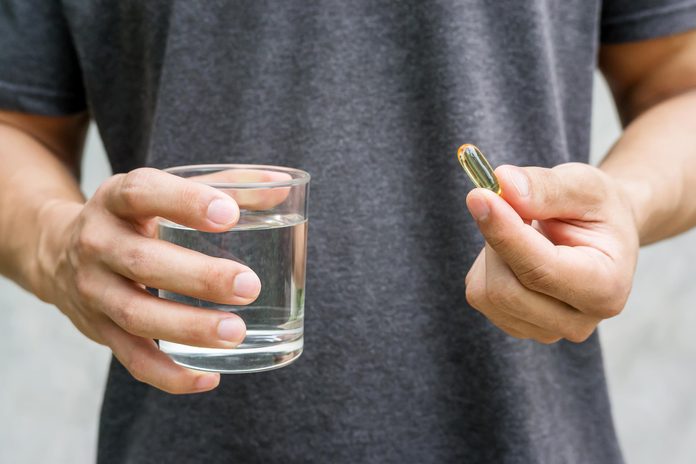
Swallow some fish oil
Your goal: 3 grams omega 3s (EPA and DHA) daily, along with 400-500 mg of omega 6 (GLA). These fatty acids are powerful anti-inflammatory fats that have been found to reduce pain and improve physical function in RA, says Dr. Blum. She recommends eating fish as part of a healthy diet but says to make sure you get enough of these nutrients, a supplement is a good idea.
This easy chart will tell you which fish have the most omega 3s.

Stay active
Exercise can help stabilize joints and keep down cortisol levels, says Dr. Blum. Just 45 minutes a week of walking or other easy exercise helped people with OA reduce pain and improve joint function in knees, hips, and ankles by 80 per cent. “If it’s too painful, do physical therapy to get started,” suggests Dr. Blum.
Here’s what happens to your body when you start walking 10,000 steps a day.

Touch and movement therapies
Meditation, mindfulness, and their cousins can help dial down stress (remember: stress influences the gut microbiome and inflammation), and help stabilize creaky joints, notes Dr. Blum. A review of 21 complementary therapies found that acupuncture, massage, yoga, and tai chi were most effective in easing OA and RA pain.
Next, check out these lifestyle tips that could slow down aging.